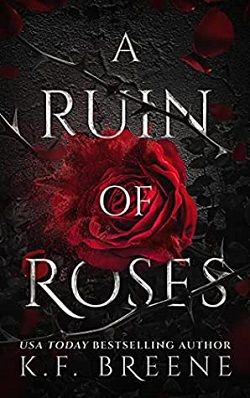"You should have heard him go on about how great you are."
"I'm sorry," she said. "I'm so sorry." Then she could no longer speak, and she hung up the phone.
ii
Chuck Dewar looked over the shoulder of Lieutenant Bob Strong, one of the cryptanalysts. Some of them were chaotic but Strong was the tidy kind, and he had nothing on his desk but a single sheet of paper on which he had written:
YO--LO--KU--TA--WA--NA
"I can't get it," Strong said in frustration. "If the decrypt is right, it says they have struck yolokutawana. But it doesn't mean anything. There's no such word."
Chuck stared at the six Japanese syllables. He felt sure they ought to mean something to him, even though he knew only a smattering of the language. But he could not figure it out, and he got on with his work.
The atmosphere in the Old Administration Building was grim.
For weeks after the raid, Chuck and Eddie saw bloated bodies from sunken ships floating on the oily surface of Pearl Harbor. At the same time, the intelligence they were handling reported more devastating attacks by the Japanese. Only three days after Pearl Harbor, Japanese planes hit the American base at Luzon in the Philippines and destroyed the Pacific Fleet's entire stock of torpedoes. The same day in the South China Sea they sank two British battleships, the Repulse and the Prince of Wales, leaving the British helpless in the Far East.
They seemed unstoppable. Bad news just kept coming. In the first few months of the New Year Japan defeated U.S. forces in the Philippines and beat the British in Hong Kong, Singapore, and Rangoon, the capital of Burma.
Many of the place names were unfamiliar even to seamen such as Chuck and Eddie. To the American public they sounded like distant planets in a science-fiction yarn: Guam, Wake, Bataan. But everyone knew the meaning of retreat, submit, and surrender.
Chuck felt bewildered. Could Japan really beat America? He could hardly believe it.
By May the Japanese had what they wanted: an empire that gave them rubber, tin, and--most important of all--oil. Information leaking out indicated that they were ruling their empire with a brutality that would have made Stalin blush.
But there was a fly in their ointment, and it was the U.S. Navy. The thought made Chuck proud. The Japanese had hoped to destroy Pearl Harbor completely, and gain control of the Pacific Ocean, but they had failed. American aircraft carriers and heavy cruisers were still afloat. Intelligence suggested the Japanese commanders were infuriated that the Americans refused to lie down and die. After their losses at Pearl Harbor the Americans were outnumbered and outgunned, but they did not flee and hide. Instead they launched hit-and-run raids on Japanese ships, doing minor damage but boosting American morale and giving the Japanese the unshakable feeling that they had not yet won. Then, on April 25, planes launched from a carrier bombed the center of Tokyo, inflicting a terrible wound on the pride of the Japanese military. The celebrations in Hawaii were ecstatic. Chuck and Eddie got drunk that night.
But there was a showdown coming. Every man Chuck spoke to in the Old Administration Building said the Japanese would launch a major attack early in the summer to tempt American ships to come out in force for a final battle. The Japanese hoped the superior strength of their navy would be decisive, and the American Pacific Fleet would be wiped out. The only way the Americans could win was to be better prepared and have better intelligence, to move faster and be smarter.
During those months, Station HYPO worked day and night to crack JN-25b, the new code of the Imperial Japanese Navy. By May they had made progress.
The U.S. Navy had wireless intercept stations all around the Pacific Rim, from Seattle to Australia. There, men known as the On the Roof Gang sat with headsets and radio receivers listening to Japanese radio traffic. They scanned the airwaves and wrote what they heard on message pads.
The signals were in Morse code, but the dots and dashes of naval signals translated into five-digit number groups, each representing a letter, word, or phrase in a codebook. The apparently random numbers were relayed by secure cable to teleprinters in the basement of the Old Administration Building. Then the difficult part began: cracking the code.
They always started with small things. The last word of any signal was often owari, meaning "end." The cryptanalyst would look for other appearances of that number group in the same signal, and write "END?" above any he found.
The Japanese helped them by making an uncharacteristically careless mistake.
Delivery of the new codebooks for JN-25b was delayed to some far-flung units. So, for a fatal few weeks, the Japanese high command sent out some messages in both codes. Since the Americans had broken much of the original JN-25, they were able to translate the message in the old code, set the decrypt alongside the message in the new code, and figure out the meanings of the five-digit groups of the new code. For a while they progressed by leaps and bounds.
The original eight cryptanalysts were supplemented, after Pearl Harbor, by some of the musicians from the band of the sunken battleship California. For reasons no one understood, musicians were good at decoding.
Every signal was kept and every decrypt filed. Comparison of one with another was crucial to the work. An analyst might ask for all the signals from a particular day, or all the signals to one ship, or all the signals that mentioned Hawaii. Chuck and the other clerical staff developed ever-more-complex systems of cross-indexing to help them find whatever the analysts needed.
The unit predicted that in the first week of May the Japanese would attack Port Moresby, the Allied base in Papua. They were right, and the U.S. Navy intercepted the invasion fleet in the Coral Sea. Both sides claimed victory, but the Japanese did not take Port Moresby. And Admiral Nimitz, commander in chief of the Pacific, began to trust his codebreakers.
The Japanese did not use regular names for locations in the Pacific Ocean. Every important place had a designation consisting of two letters--in fact two characters, or kanas, of the Japanese alphabet, although the codebreakers usually used equivalents from the Roman A to Z. The men in the basement struggled to figure out the meaning of each of these two-kana designators. They made slow progress: MO was Port Moresby, AH was Oahu, but many were unknown.
In May evidence was fast building up of a major Japanese assault at a location they called AF.
The best guess of the unit was that AF meant Midway, the atoll at the western end of the fifteen-hundred-mile-long chain of islands that started at Hawaii. Midway was halfway between Los Angeles and Tokyo.
A guess was not enough, of course. Given the numerical superiority of the Japanese navy, Admiral Nimitz had to know.
Day by day, the men Chuck was working with built up an ominous picture of the Japanese order of battle. New planes were delivered to aircraft carriers. An "occupation force" was embarked: the Japanese were planning to hold on to whatever territory they won.
It looked as if this was the big one. But where would the attack come?















